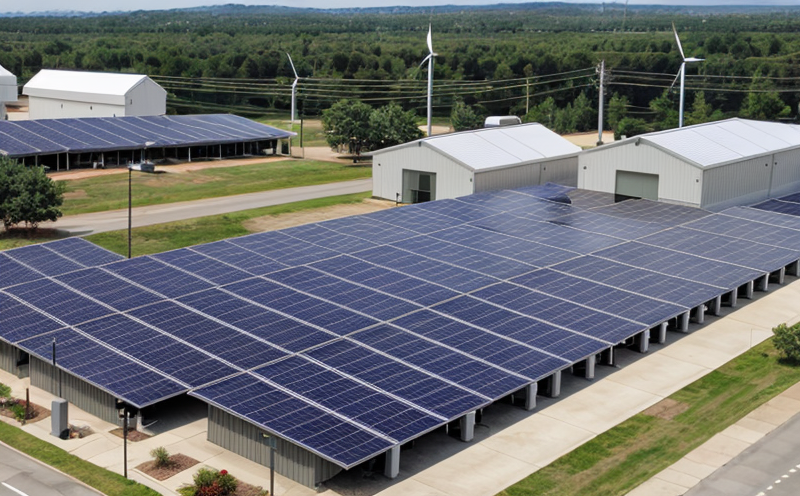IEC 60529 IP Protection Testing of Microgrid Components
The International Electrotechnical Commission (IEC) standards, particularly IEC 60529, are pivotal for ensuring the environmental protection levels of electrical enclosures. In the context of microgrid and distributed energy systems testing, these standards play a critical role in safeguarding components against dust ingress and water penetration, which are essential for maintaining system reliability and longevity.
Microgrids represent an evolving segment within renewable energy infrastructure that integrates local generation resources such as solar panels, wind turbines, storage solutions, and loads into a single entity. The integration of multiple power sources in microgrids demands robust environmental protection to mitigate risks associated with harsh weather conditions and varying operational environments. IEC 60529 IP ratings provide a standardized system for assessing the effectiveness of these protective measures.
Our laboratory adheres strictly to the procedures outlined in IEC 60529, which classify enclosures based on their ability to protect against ingress from foreign objects and water. The IP code consists of two numbers: the first indicates resistance to solid particles (e.g., dust) and the second refers to protection against liquid ingress.
For instance, an IPX4 rating implies protection against splashing water from any direction, while a higher rating such as IP65 suggests robust protection against dust and low-pressure jets of water. By conducting thorough testing on microgrid components according to these standards, we ensure that the systems can withstand environmental challenges without compromising performance.
The process involves subjecting test specimens to controlled environments designed to simulate real-world conditions where they would be exposed to dirt, dust, rain, snow, and other elements. Specimens are carefully prepared prior to testing by cleaning them according to standard procedures and ensuring that all connections are secure. During the actual testing phase, specialized equipment simulates various environmental scenarios in a precise and repeatable manner.
Upon completion of each test run, detailed reports are generated outlining the results observed under different IP ratings. These reports serve as critical tools for quality managers, compliance officers, R&D engineers, and procurement teams to evaluate component performance accurately. They also provide valuable insights into potential areas requiring improvement or optimization within design parameters.
Our experienced team ensures that all tests comply with international standards such as IEC 60529, thereby offering reliable data that supports informed decision-making processes across various sectors involved in microgrid development and implementation.
Industry Applications
- Renewable energy projects involving solar arrays, wind turbines, and hybrid systems.
- Smart grids and grid-tied inverters connecting directly to utility networks.
- Off-grid installations serving remote areas lacking reliable electricity supply from traditional sources.
- Data centers equipped with backup power supplies ensuring continuous operation during outages.
Customer Impact and Satisfaction
- Achieving regulatory compliance through rigorous testing enhances customer confidence in product quality.
- Reduces warranty claims by identifying design flaws early in the development cycle.
- Promotes brand reputation among stakeholders, including investors, partners, and end-users.
- Simplifies the supply chain management process by ensuring consistent performance across all components used in microgrids.





